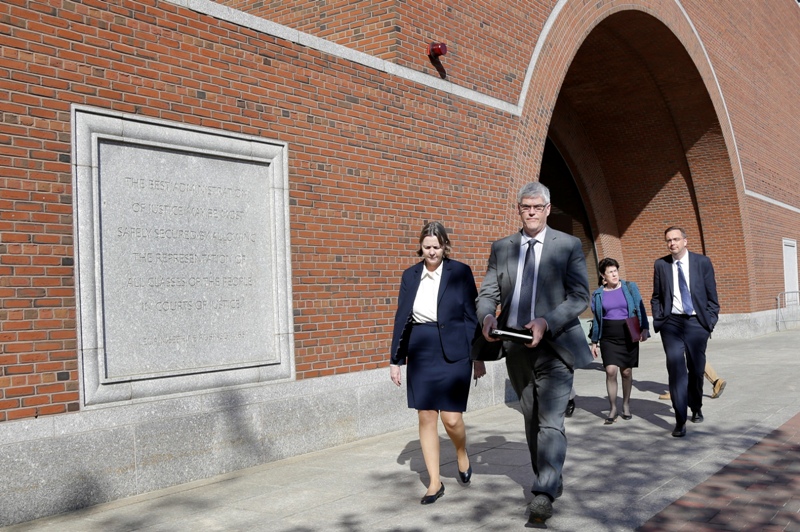BOSTON— Jurors in the trial of Boston Marathon bomber Dzhokhar Tsarnaev must make one of the most difficult decisions a jury can be faced with: Should they sentence him to death or spare his life?

As they deliberate, they will need to fill out a lengthy, complicated verdict form that asks them to make findings on 12 aggravating factors prosecutors say support a death sentence and 21 mitigating factors his lawyers say support a decision to instead sentence him to life in prison.
The jury began deliberating late Wednesday and continued all day Thursday, for a total of about 8 1/2 hours over two days. It’s scheduled to return to U.S. District Court on Friday to continue.
WATCH: Anti-death penalty activist testifies in Boston Bombing trial
The jurors must weigh any mitigating factors they find against any aggravating factors to determine Tsarnaev’s sentence.
The jury convicted Tsarnaev last month of all 30 federal charges against him, including 17 that carry the possibility of the death penalty.
Three people were killed and more than 260 were injured when two pressure cooker bombs packed with shrapnel exploded near the marathon finish line on April 15, 2013. A Massachusetts Institute of Technology police officer was killed days later.
The verdict form, which is 24 pages long, is like a worksheet for the jury. It walks jurors through a process before they get to the decision on whether Tsarnaev is sentenced to death or life in prison.
READ MORE: Boston Marathon bomber Tsarnaev’s lawyers rest case at death penalty trial
First, the jurors must decide whether any “gateway,” or threshold, factors exist, including whether Tsarnaev intentionally killed the victim or victims; inflicted serious bodily injury that resulted in death; participated in an act contemplating that the life of a person would be taken; or engaged in an act of violence knowing that it created a grave risk of death so that it constitutes reckless disregard for human life.
Then, they must begin deciding on the various mitigating and aggravating factors.
It isn’t until Page 21 of the form that the jury is asked to check off what Tsarnaev’s sentence will be. Seventeen of the 30 charges carry the possibility of the death penalty.
Jurors on Thursday sent a note to Judge George O’Toole Jr. asking about the legal concepts of “aiding and abetting” and “conspiracy.”
The judge said whatever intentions Tsarnaev had is a question of fact to be determined by jurors. The jurors also asked about how they should fill out a portion of the verdict slip.



Comments